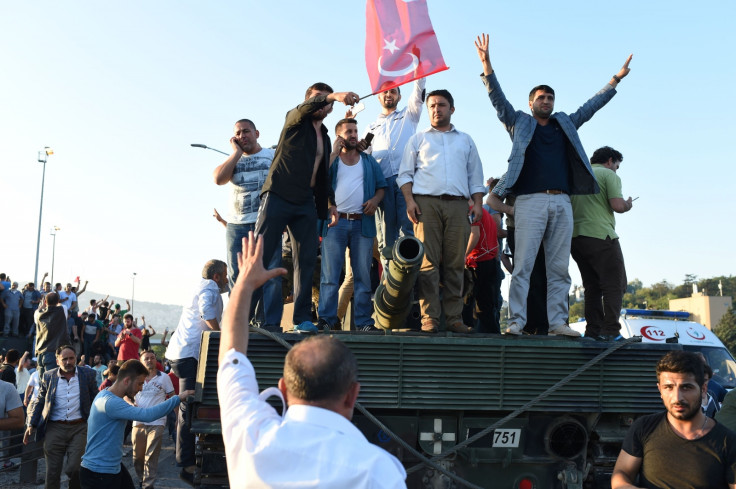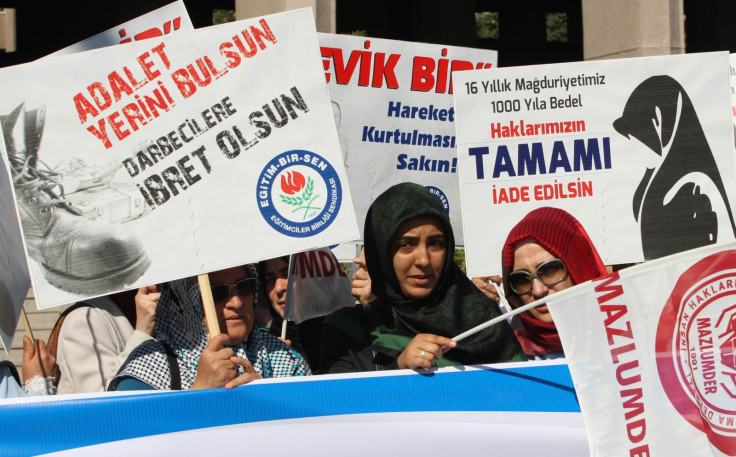Turkey's long history of military coups
This is the sixth time in the Turkish Republic's history that the military has tried to overthrow the government.
On Friday, 15 July, a Turkish military group announced they had seized power from the government in a coup. While it has been confirmed that the Turkish Armed Forces are still attempting to take control, already close to 90 people have been killed as rebel forces clashed against the police.
This is not the first time Turkey has witnessed attempted coups and rebellion from the military. IBTimes UK takes a look back at the country's violent internal fight for power over the past decades.

According to the country's constitution, the Turkish military has the authority to step in and take control of the country in times of turmoil and they have made use of this power on a number of occasions.
1960
The first coup in the Turkish Republic took place in 1960, which saw the overthrow of the Democratic party government led by then prime minister, Adnan Menderes. Menderes was trying to curb the Ataturk's reforms, which attempted to westernise the country. With social and economic turmoil prevalent, Colonel Alparslan Türkeş along with a group of close to 38 officers took control of the nation on 27 May and stayed in power until a new democratically elected government could be put in place.
President Celal Bayar, PM Menderes and several cabinet members were arrested and tried for treason and other offences. Menderes was sentenced to death for violating the constitution and was executed on 17 September
The positions of both, president and prime minister were taken over by General Cemal Gursel until 1961.
1971
Despite the change of government, a decade later Turkey was once again suffering, this time due to severe economic instability. Recession and inflation went hand in hand to induce the military to once again step in and take charge.
In what was known as a "coup by memorandum", chief of the general staff Memduh Tagmac put forth a memorandum to the prime minister, Suleyman Demirel, demanding a change of government to reflect Ataturk's views. Following the event, Demirel resigned and was replaced by Ismail Nihat Erim who went on to create a government made up of a mix of civilian politicians and military personnel.
However, soon after, the Turkish People's Liberation Army began creating a new wave of terror in the form of kidnappings, ransom demands and even bank robberies. Martial law became regular at this time. In 1973 retired naval officer Fahri Koruturk was appointed as president.
Political terrorism continued to hold sway on Turkey with the prime minister being replaced 11 times in the 1970s. This also was a time of bloodshed and widespread violence, with the death count crossing into the thousands.
1980
By 1979, the military believed they needed to once again take charge in order to bring about some semblance of order to the country. By March 1980, martial law was announced and the then-government was dissolved.
Military officer Ahmet Kenan Evren was made president and naval officer Bulend Ulusu took on the role of prime minister, followed by his deputy Turgut Ozal.
1997
In February 1997, the military put forth a memorandum to the Islamic Welfare Party-controlled government demanding the resignation of the then prime minister Necmettin Erbakan. The Welfare Party, of which current President Recep Tayyip Erdogan was a former member, was shut down the following year.
The 'Sledgehammer' conspiracy
In 2012, 300 military officers were accused of plotting to remove Erdogan from the post of prime minister, which he held at the time.

© Copyright IBTimes 2025. All rights reserved.






















